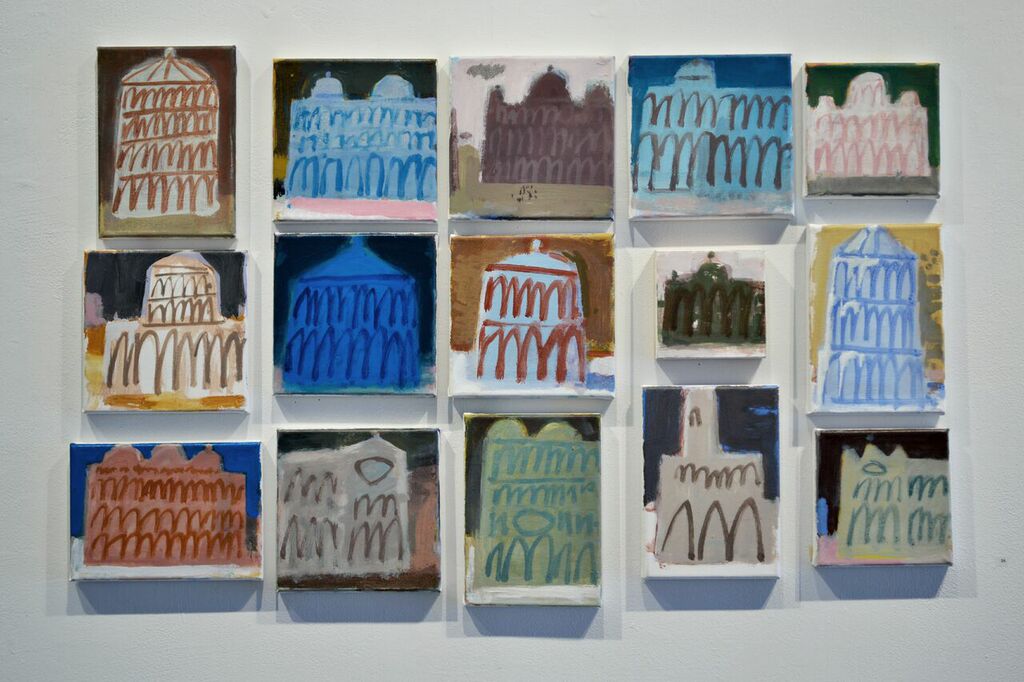It has long been the case that humans, and in fact all life, have a vital dependency on water for survival. However, to humans, the function of water has since extended beyond this basic need, as we use it as a resource to uphold our commodious and modernized living. Adrian Fish, in his Aquaphilia Project IV: Critical Infrastructure, explores this very relationship between humanity and this vital resource as it becomes progressively more integral to not only our health and proliferation as a species, but also to our acquired quality of living. In his more recent Aquaphilia works, he portrays the ways in which water is used for the purpose of entertainment, namely through a swimming pool, a water park, and an aquarium. Similarly, his current exhibition at the loop Gallery explores the mechanical devices and processes behind a water-waste management plant, focusing more on its aesthetic quality rather than seeking to visually explain the various components and their place in an overall schema.
 Adrian Fish, Aquaphilia #1215, 2014, Archival Inkjet print, 34 x 48 in
Adrian Fish, Aquaphilia #1215, 2014, Archival Inkjet print, 34 x 48 in
 Adrian Fish, Aquaphilia #1277, 2014, Archival Inkjet print, 34 x 48 in
Adrian Fish, Aquaphilia #1277, 2014, Archival Inkjet print, 34 x 48 in
What is immediately noticeable about his works is the symmetrical and linear-perspectival arrangement. Upon first glance, one would believe that these works are meticulously organized by the artist to create an intentionally ordered space suited for a perfect photograph. Though this is effect, it is certainly not the case, as Adrian Fish himself said that this is how the plant is always laid out; nothing was manipulated, added, or removed. Instead, the photograph was planned to supplement the mechanical aesthetic, focusing on the visual depiction of the infrastructure. It is not meant to be an explanation of how this machines work within a grand process, which is actually supposed to be kept elusive from the viewer so that it can be considered for its value as an artistic subject and not for its function(s).
 Adrian Fish, Aquaphilia #1254, 2014, Archival Inkjet print, 34 x 48 in
Adrian Fish, Aquaphilia #1254, 2014, Archival Inkjet print, 34 x 48 in
 Aquaphilia IV: Critical Infrastructure #1251, 2014, Archival Inkjet Print, 36 x 50 in
Aquaphilia IV: Critical Infrastructure #1251, 2014, Archival Inkjet Print, 36 x 50 in
Also part of the loop Gallery exhibition are David Holt’s works collectively entitled Arcadia: a series of small-scale paintings that “playfully depict idyllic landscapes, bathers, and ancient architecture,” while combining several stylistic influences. His subject matter includes ancient Roman buildings, such as temples and old governmental institutions, and traditional Italian landscapes that feature nudes socializing or appearing to pose for a family photograph.
 David Holt, Fifteen Ancient Buildings, 2014, Acrylic on canvas/wood, varied dimensions
David Holt, Fifteen Ancient Buildings, 2014, Acrylic on canvas/wood, varied dimensions
To further encapsulate this candid quality, the works are generally small in scale and therefore seem more reminiscent of a memento one would carry on their person or display in their home, and the entirety of his exhibit appears as an album of select personal experiences. Moreover, there is also inspiration from Japanese literati landscapes paintings, which emphasize the natural world indefinitely while the human presence is consequently minimal and inferior.
 David Holt, Four paintings, all titled, Figure Pair, 2015, Acrylic on canvas, each 10 x 8 in but the bottom left: 10 x 9 in
David Holt, Four paintings, all titled, Figure Pair, 2015, Acrylic on canvas, each 10 x 8 in but the bottom left: 10 x 9 in
The same occurs in his works, as many of the paintings feature the calm yet dominant presence of nature in relation to the people, which is achieved by either miniaturizing the human subjects so they pale in comparison to the forests and plains and/or accentuating the color contrast between the two. However, unlike the Japanese literati images, the sense of atmospheric perspective becomes flattened to seem more like a still moment in time, thereby furthering the appearance of a photographed scene.
Text and photo: Simon Termine
*Exhibition information: Adrian Fish: The Aquaphilia Project IV – Critical Infrastructure (Part of Scotiabank CONTACT Photography Festival) & David Holt: Arcadia, April 25 – May 17, 2015, loop gallery, 1273 Dundas Street West, Toronto, (three doors west of Dovercourt). Gallery hours: Wed – Sat 12 – 5, Sun 1 – 4 p.m.

Adrian Fish focus continues to remain distinctive.Commenting on perspective not function is overwhelming.It certainly grabs your attention as to the enormity of today’s situation.
The critique has nailed Adrian’s Project right on.
Well written and photographed. I understand the aesthetic especially in an increasingly changing world away from machinery and manufacturing. Of course, the use, importance, and I guess waste is also apparent.